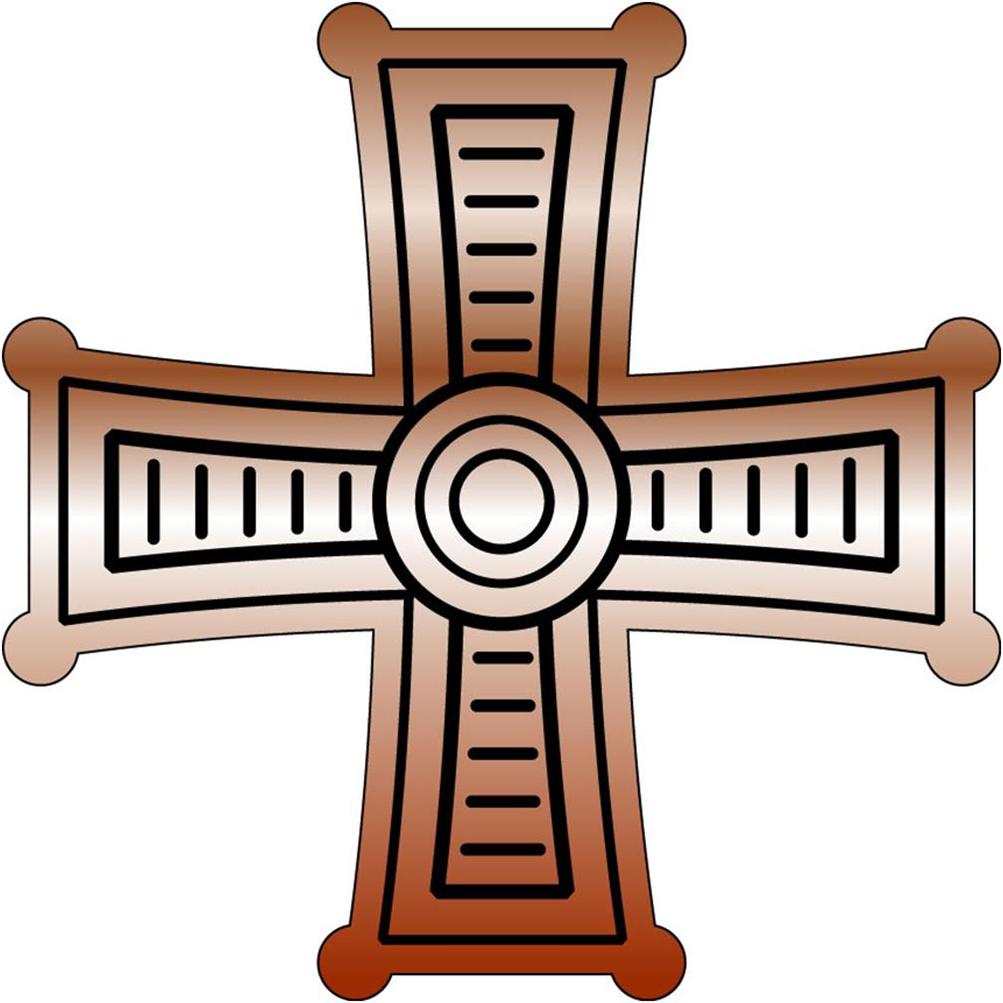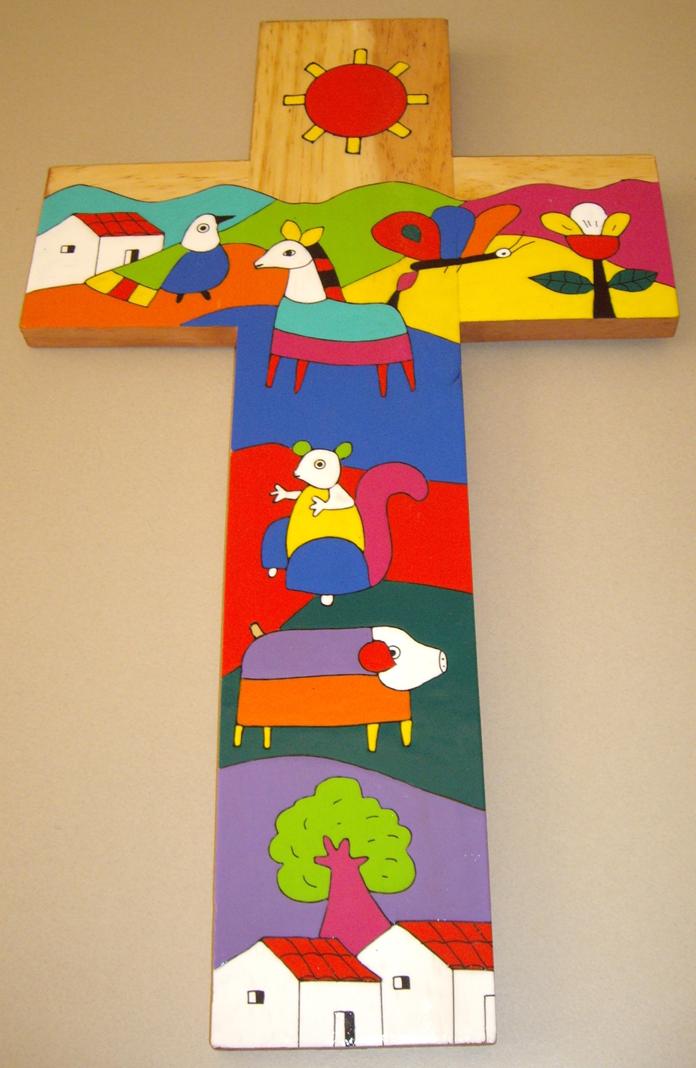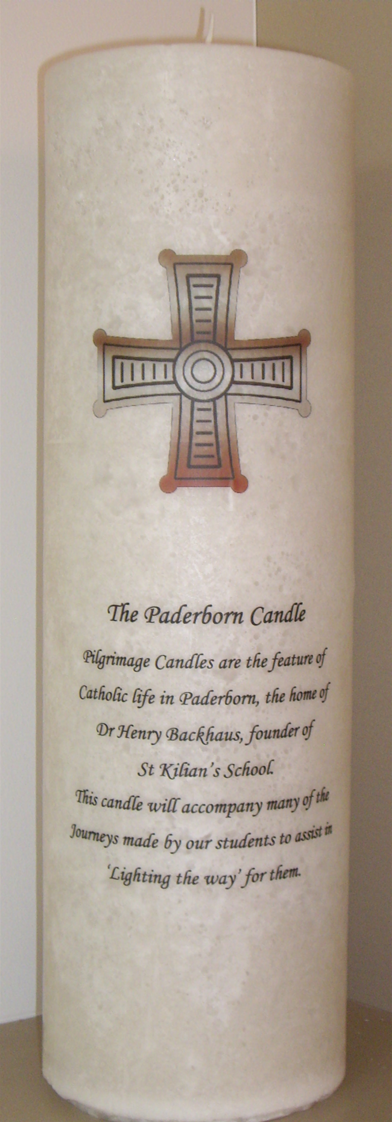HISTORY OF ST KILIAN'S SCHOOL
St Kilian's School has its origins in the early 1850's when Dr Henry Backhaus, the first Catholic priest on the Bendigo Goldfields, established a tent/school/chapel at Consecrated Flat, a site currently occupied by St Kilian's Church. From these humble beginnings, St Kilian's School has continued to offer educational opportunities especially to children of the Bendigo District for over 130 years.
SYMBOLS OF ST KILIAN'S SCHOOL
 The Paderborn Cross
The Paderborn Cross
St Kilian and St Liborius were sent as missionaries from Ireland to Germany. Dr Henry Backhaus from Paderborn in Germany was the first priest of the Bendigo Goldfields who founded, amongst others, St Kilian's and St Liborius' Churches and Schools. The Cross depicted is the oldest Christian symbol from Paderborn. Byzantine style can be seen in the rounded edges of the arms and portrays the connection between the cross and the Tree of life in the book of Genesis. Sandhurst Diocese was presented with this cross by the Archbishop of Paderborn in 1999.
 The Creation Cross
The Creation Cross
Inspired by the story of the Paderborn Cross, St Kilian's School community has chosen creation crosses designed by El Salvador. These crosses and the Paderborn Cross connect the Story of Creation, the Tree of Life from Genesis and the Gift of New Life in Jesus.
 The Paderborn Candle
The Paderborn Candle
Pilgrimage Candles are a feature of Catholic life in Paderborn, the home of Dr Henry Backhaus, founder of St Kilian's School. This candle will accompany many of the Journeys made by our students to assist in 'Lighting the way' for them.
 The Peacock
The Peacock
The Peacock is represented in the Coat of Arms for the Diocese of Paderborn. The Peacock in Catholic tradition symbolises New Life. A Peacock accompanied the retinue carrying the Body of St Liborius to Paderborn from Le Mans in France.
For further information about the History of the Sandhurst Diocese History of St Kilian's Bendigo
Saint Kilian
Kilian was born in Mullagh, County Cavan, Ireland, about 640. He, with eleven other missionary priests and very few possessions, sailed to Franconia and Thuringia (Germany). Kilian converted a Thuringia Duke, Gozbert, and bought the Gospel to many in that area. The conversion of the pagan duke angered his wife, Geliana, who brought about the murder of Kilian and his two companions, a priest, Coloman, and a deacon, Totnan. The martyred Kilian was soon revered and his relics were transferred to the Cathedral in Wurzburg on July 8, 752. It is there that he is greatly honoured by the people. The Cathedral is dedicated in his name. The seminary is called Killianarun and numerous statues of the saint are prominent around the city. The diocese and city celebrate "Kilianfest" in the first week of July with a street carnival, pageants and a solemn procession with the relics of the three martyrs. St. Kilian's feast-day is July 8.
Catherine McAuley
The Founding order of St Kilian's School was the Sisters of Mercy. Here is further information on the Sister of Mercy and Catherine McAuley.
The Sisters of Mercy

